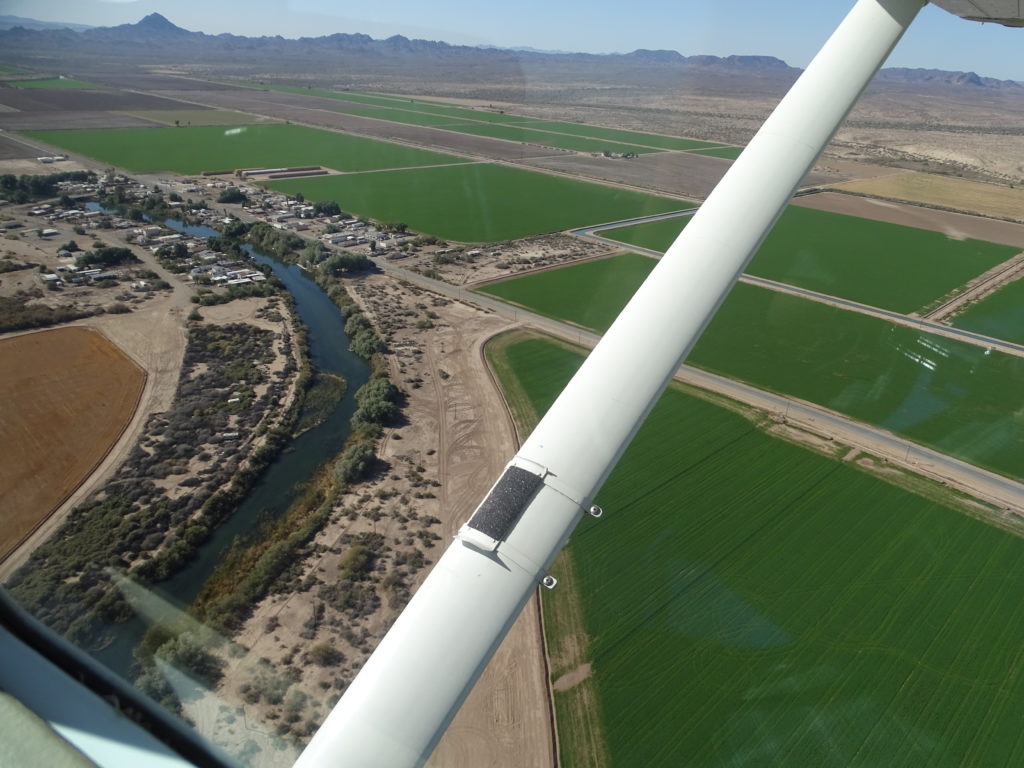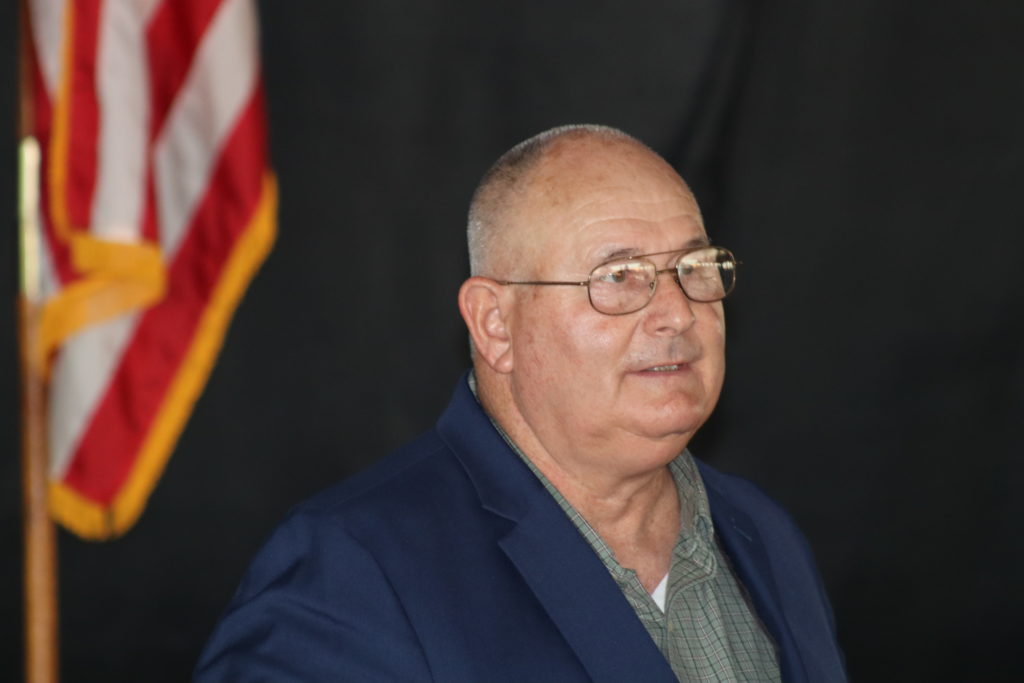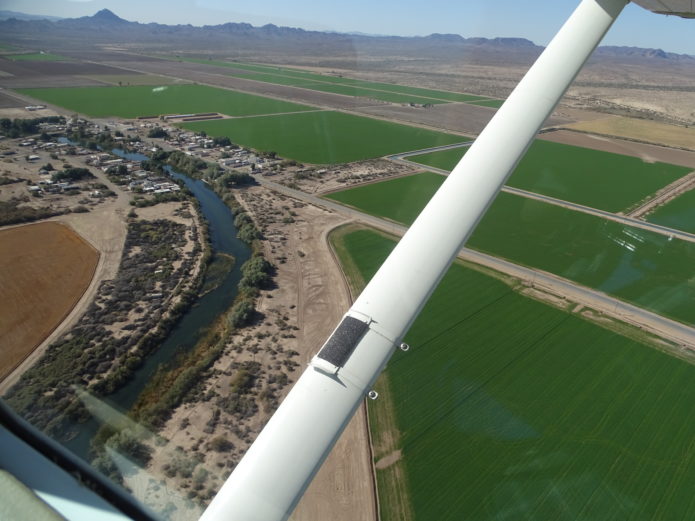
On the far northeastern corner of Imperial County and extending into Riverside County sits the Palo Verde Valley, where a tapestry of farmland fulfills the pioneering vision of those who came before and saw what this unique environment could create. Today, thanks to the support of the Palo Verde Irrigation District (PVID), agriculture continues to thrive in that valley despite the challenging times caused by climate change. This year, PVID is celebrating its centennial as an irrigation district, and this blog would like to recognize that important milestone.
The history of agriculture in the Palo Verde Valley highlights the spirit of those who saw what the desert Southwest could become with investment and the tools to manage the Colorado River. Investors like Thomas Blythe, after whom the city of Blythe—located in the heart of the Valley—is named, are key to that history. According to the PVID website, Blythe purchased 40,000 acres of land within the Palo Verde Valley and subsequently, in 1877, made the first of several filings for river water from the state of California to use for agriculture, mining, manufacturing, domestic and commercial purposes. He was followed by others, like Frank Murphy and Ed Williams, two Arizona cattlemen who, in 1904, visited the region and saw a future for both agriculture and the cattle industry. They helped form the Palo Verde Land and Water Company. Then, there was C. K. Clarke, who, as the first engineer of the water company, built the first intake structure and located the principal canals that continue to serve that region today. The need for drainage in the Palo Verde Valley led to the creation of the Palo Verde Drainage District in 1921. Soon after, it became evident to water users that one governing body to manage both the irrigation and drainage was necessary, which led the state legislature to adopt the Palo Verde Irrigation Act of 1923 and form PVID.

Today, PVID occupies about 189 square miles of territory in Riverside and Imperial counties. It contains approximately 131,298 acres of irrigated croplands, and the Colorado River, which is the boundary between Arizona and California, forms PVID’s eastern and southern boundaries. PVID, as an irrigation district, has 66 employees to serve the needs of the farming community. PVID’s primary functions are to divert and distribute irrigation water from the Colorado River to the farmland, and to provide agricultural drainage for that land. In recent years, the focus has also been on improving the efficiency of the water delivery system and the improvement of drainage throughout that Valley. PVID is led by a seven-member Board and at the helm is General Manager JR Echard, a Blythe native, who has worked for PVID for 30 years, the last year and a half as the general manager.
This blog writer had a chance to talk to Echard about how important this year’s centennial is to PVID. He credited the work of the pioneering members of the district who helped build the structures that farmers depend on today, like the Palo Verde Dam, a diversion structure that brings Colorado River water into the PVID service area. “It means a lot to us that our forefathers have set this valley up in a way that all we need to do is maintain it.” He credits his current Board of Directors and his staff for the service they provide to the farming community. “It takes the entire organization to make these things happen,” he said.
He also credits the farmers for their efforts both in terms of the crops they grow and toward conservation. Agriculture within PVID consists of alfalfa and other grass crops, such as Bermuda and Sudan, along with wheat, cotton, potato, broccoli, onion, garlic, cantaloupe, melon, and citrus, to name some of the key crops. At the same time, conservation among farmers within PVID has become part of their daily operations, both as part of a 35-year agreement with the Metropolitan Water District to fallow a portion of their land, and more recently to help support the Colorado River. When reductions under the 2007 Interim Guidelines, expiring in 2026, and the 2019 Drought Contingency Plans, were unable to stop declining elevations in Lakes Mead and Powell, the two reservoirs California depends on, the U.S. Bureau of Reclamation (Reclamation) implemented a series of actions in both the Upper and Lower Basins. The Lower Basin 500 Plus Plan was one such action meant to generate an additional 500,000 acre-feet of conserved water in both 2022 and 2023. PVID was among the agencies to contribute to that effort as 75 percent of the water generated under its fallowing program went to supporting the river in 2022 and again this year.
Echard pointed out that beyond the 500 Plus Plan, PVID is prepared to continue to provide conserved water to the river through 2026 as part of a Lower Basin Plan to augment river supplies, but that effort is dependent on funding from Reclamation under the federal Inflation Reduction Act. An agreement for that funding is still in development. Echard added that PVID, which is part of the Colorado River Board of California, understands it has an ongoing role to play in supporting the river. “Water conservation in the future is critical,” he said. Still, as PVID looks toward the future, like all water agencies, it is concerned about protecting its water rights and about ensuring farmers can continue to thrive even with a focus on conservation. He added that as discussions turn to developing the next set of guidelines to manage the Colorado River beyond 2026, the only way the river will be able to serve all users is if everyone is willing to do their part.
For now, though, it is a time for PVID to celebrate this centennial milestone and the effort it took to reach this point. Such milestones are an important reminder for everyone on the Colorado River of the collaborative spirit that enabled water agencies to tame the river and share its life-giving supplies. It will take that same collaborative spirit to overcome the challenges ahead as agencies chart a future course to serve their own needs and to ensure the river continues to serve all users.
